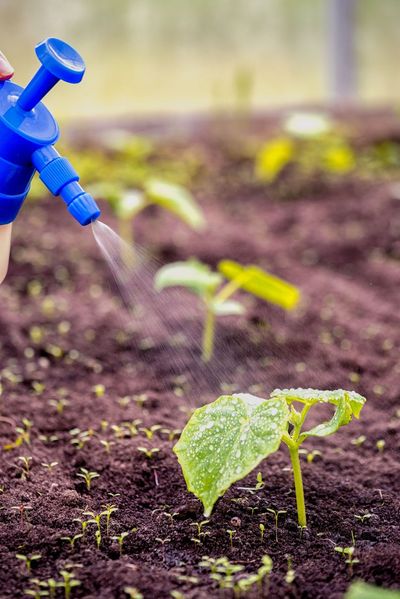What is Calcium Nitrate?
Diseases like blossom end rot are easy to control with calcium nitrate. What does calcium nitrate do? It provides both calcium and nitrogen. It is usually applied as a dissolved solution, allowing for quicker plant uptake but may also be applied as side or top dressing. Ammonium nitrate is a commonly used source of nitrogen but it interferes with calcium uptake and causes calcium deficiency disorders in plants. The solution is to apply calcium nitrate instead to any crop that has a tendency to develop calcium deficiency disorders. Calcium nitrate is produced by applying nitric acid to limestone and then adding ammonia. It is known as a double salt, since it is comprised of two nutrients common in fertilizers which are high in sodium. The processed result also looks crystallized like salt. It is not organic and is an artificial fertilizer amendment. What does calcium nitrate do? It helps with cell formation but it also neutralizes acids to detoxify the plant. The nitrogen component is also responsible for fueling protein production and essentially leafy growth. Heat and moisture stress can cause calcium deficiencies in certain crops, like tomatoes. This is when to use calcium nitrate. Its combined nutrients can help cell growth stabilize and fuel leafy development.
When to Use Calcium Nitrate
Many growers automatically side dress or top dress their calcium sensitive crops with calcium nitrate. It is best to do a soil test first, as excess calcium can also lead to problems. The idea is to find a balance of nutrients for each particular crop. Tomatoes, apples and peppers are examples of crops that may benefit from calcium nitrate applications. When applied early in fruit development, the calcium stabilizes cells so they don’t collapse, causing blossom end rot. Meanwhile, the nitrogen is fueling plant growth. If you are an organic gardener, however, calcium nitrate fertilizer is not an option for you since it is synthetically derived.
How to Use Calcium Nitrate
Calcium nitrate fertilizer can be used as a foliar spray. This is most effective in treating and preventing blossom end rot but also cork spot and bitter pit in apples. You can also use it to treat magnesium deficiencies when it is combined at a rate of 3 to 5 pounds magnesium sulfate in 25 gallons of water (1.36 to 2.27 kg. in 94.64 liters). As a side dress, use 3.5 pounds of calcium nitrate per 100 feet (1.59 kg per 30.48 m). Mix the fertilizer into the soil, being careful to keep it off of foliage. Water the area well to allow the nutrients to start seeping into soil and get to plant roots. For a foliar spray to correct calcium deficiency and add nitrogen, add 1 cup of calcium nitrate to 25 gallons of water (128 grams to 94.64 liters). Spray when the sun is low and plants have been watered sufficiently.
